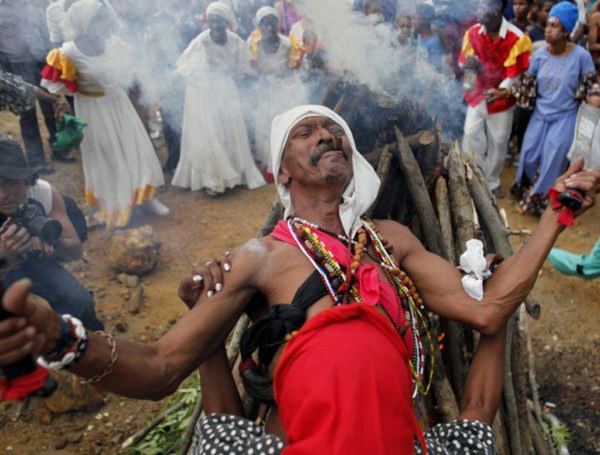What Cuban Santeria Priests Prophesize for 2023

Prophesies include natural disasters by hurricanes, sea surges and river floods that will result in economic and human losses.
HAVANA TIMES – Cuba’s Yoruba Cultural Association, a religious organization, predicts more disease, higher crime rates and alcoholism in 2023, as well as warning about the need to shift mindsets to develop new socio-economic opportunities on the island, EFE news agency reports.
A group of Cuban Santeria priests or babalawos gathered at the Association in Havana on New Year’s Eve and published their “Letter of the Year” with their forecast, on January 1st, which is a deeply-rooted tradition for followers and believers.
Prophesies from this oracle of Afro-Cuban religions from the letter or ruling sign this year also foresee natural disasters caused by hurricanes, sea surges and river floods that will result in economic and human losses.
They predict a rise in violent crime and theft, so they recommend people take precautions with individual and state-controlled property.
They are also concerned by the growing trend of an aging population that is left without support from young people given the mass exodus recorded over the past year and thus, lower birth rates.
They predict higher alcohol consumption rates among the population, which will lead to social problems and they believe dangers linked to this disease need to be disseminated more.
They also issued a warning about children’s and young people’s education, warning of an exodus of teachers to other professions.
Obatalá
Obatalá, the God of Creation, the highest saint who occupies a dominant space in Afro-Cuban Santeria, will be the ruling deity this year.
In Cuban Santeria, she is syncretized with the Virgin of Mary (for Catholics) and represents purity, the divinity of impossible causes and is a protector of the sick. She is seen as the creator of human life, and therefore she is given the power of being the owner of every head.
This time, she will be accompanied by Oshun, the Virgin of Charity of El Cobre, the Patron Saint of Cuba in Catholicism. According to her story, she is the God of love and freshwater in the world, personifying love, fertility, the intensity of emotions and spirituality.
Recommendations
One of the most widespread syncretic religions in Cuba, every letter or sign in Santeria has a story of the gods or orishas from the Yoruba Pantheon, that speak for it and carry a moral lesson or recommendation.
In 2023, recommendations include prioritizing preventive health measures in Cuba to limit the spread of infectious diseases.
Meanwhile, they advise for a shift in mindsets to facilitate the development of new socio-economic opportunities, as well as legally developing domestic economic opportunities in agro-industrial production.
They also warn the Government about the excessive use of biochemicals on root vegetables, fruit, cold cuts, and food in general, because of their harmful effects to human health.
Santeria in Cuba
Syncretic religions arrived in Cuba with African slaves during the colonial era, and traditions were passed on orally from one generation to the next via prayers, rites, spells, magical formulas, proverbs, dances, songs, sacrifices and liturgies.
Fortune-telling is one of the main practices in Santeria and its most distinctive objects are snail shells, which are used during these consultation sessions, and “foundation necklaces” made with a number of colors that characterize each deity.





